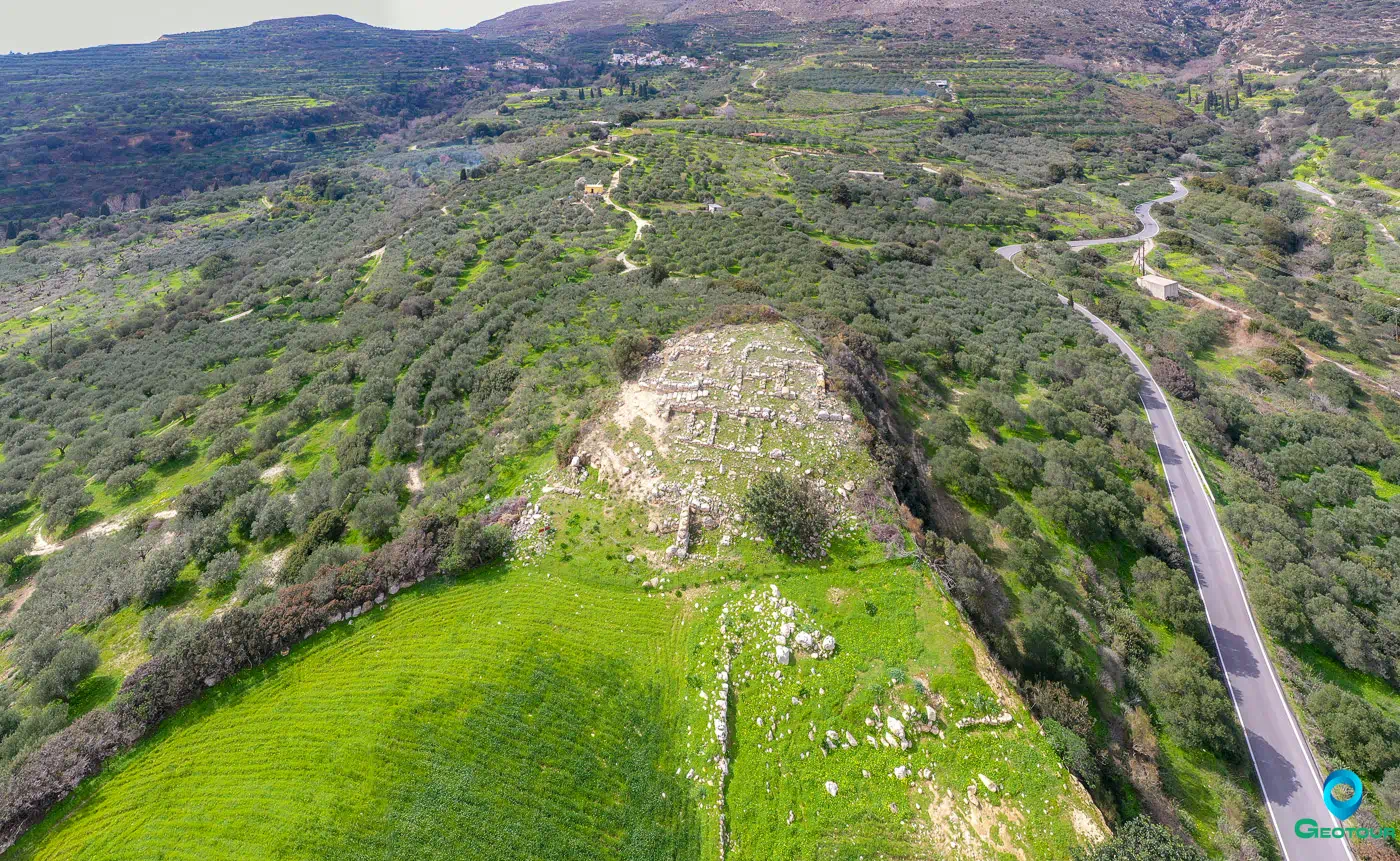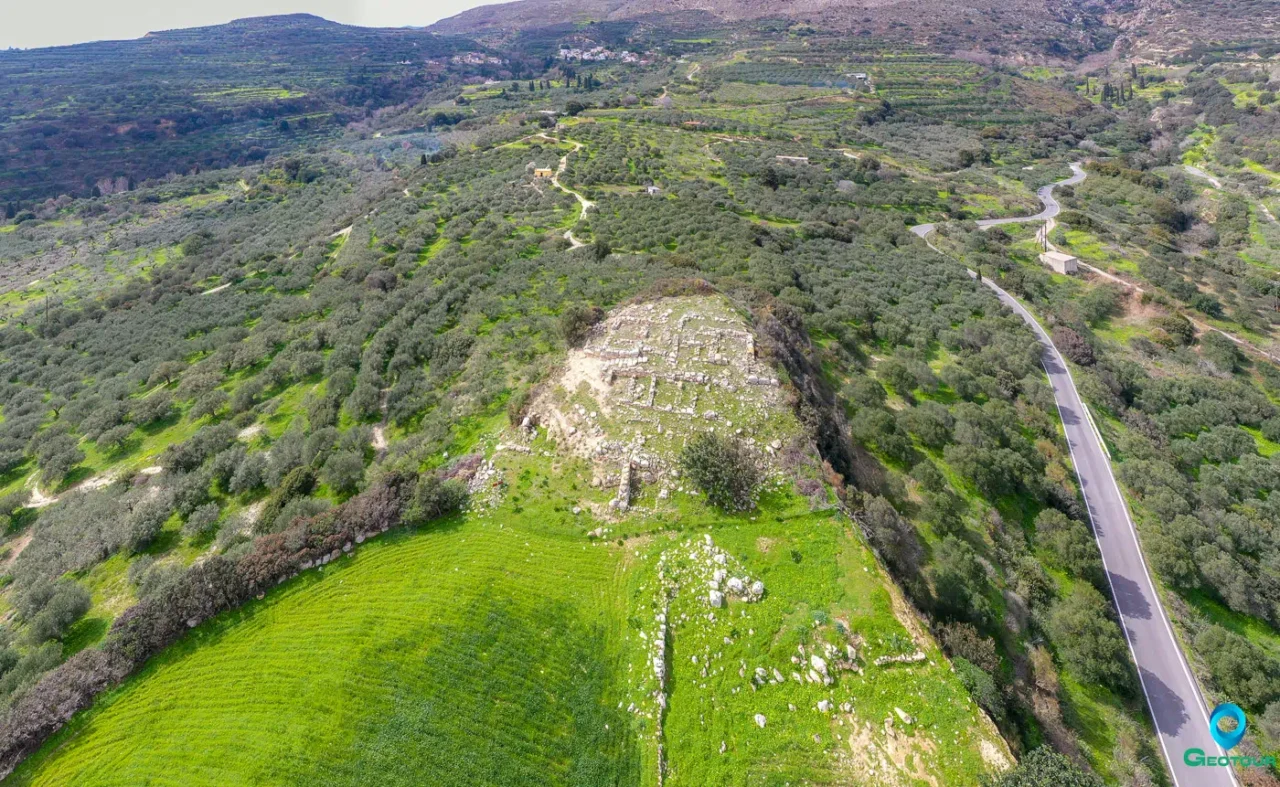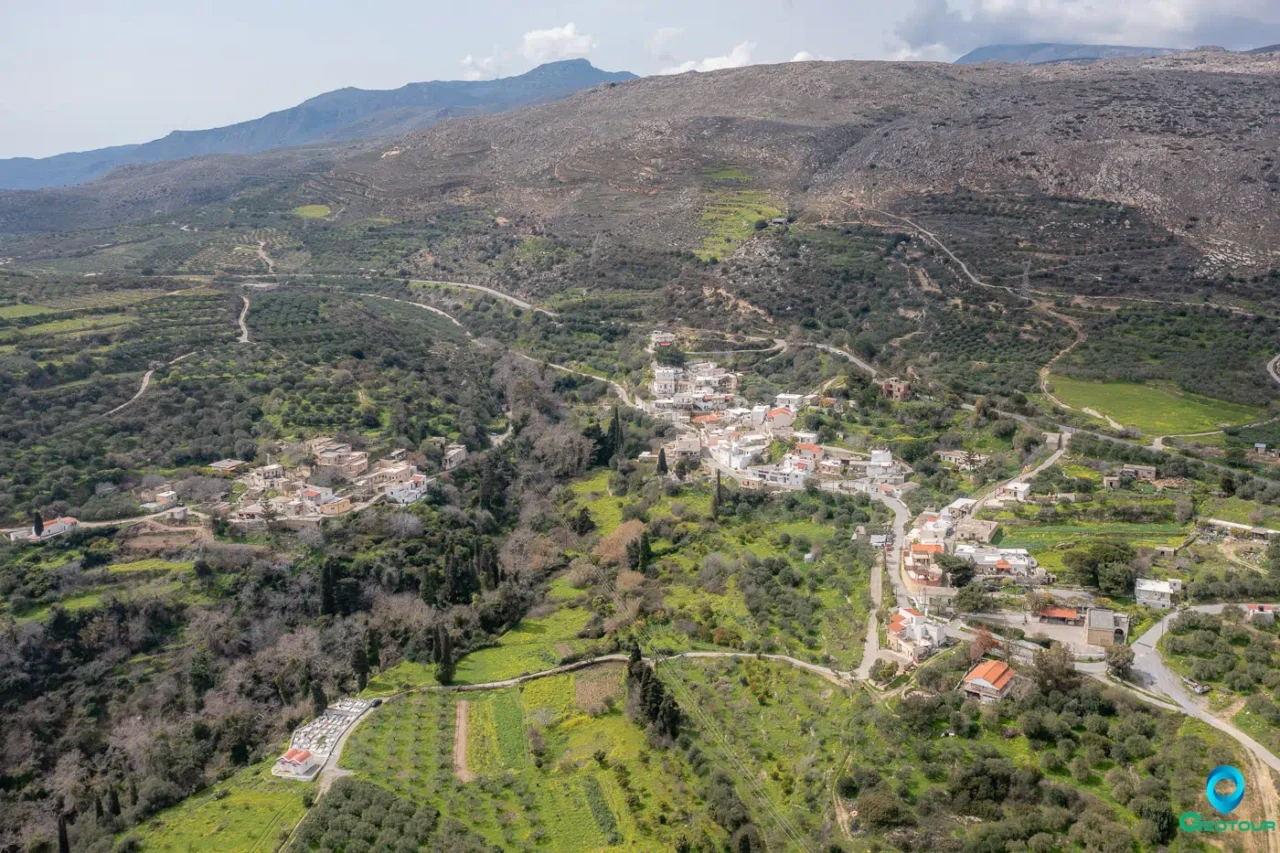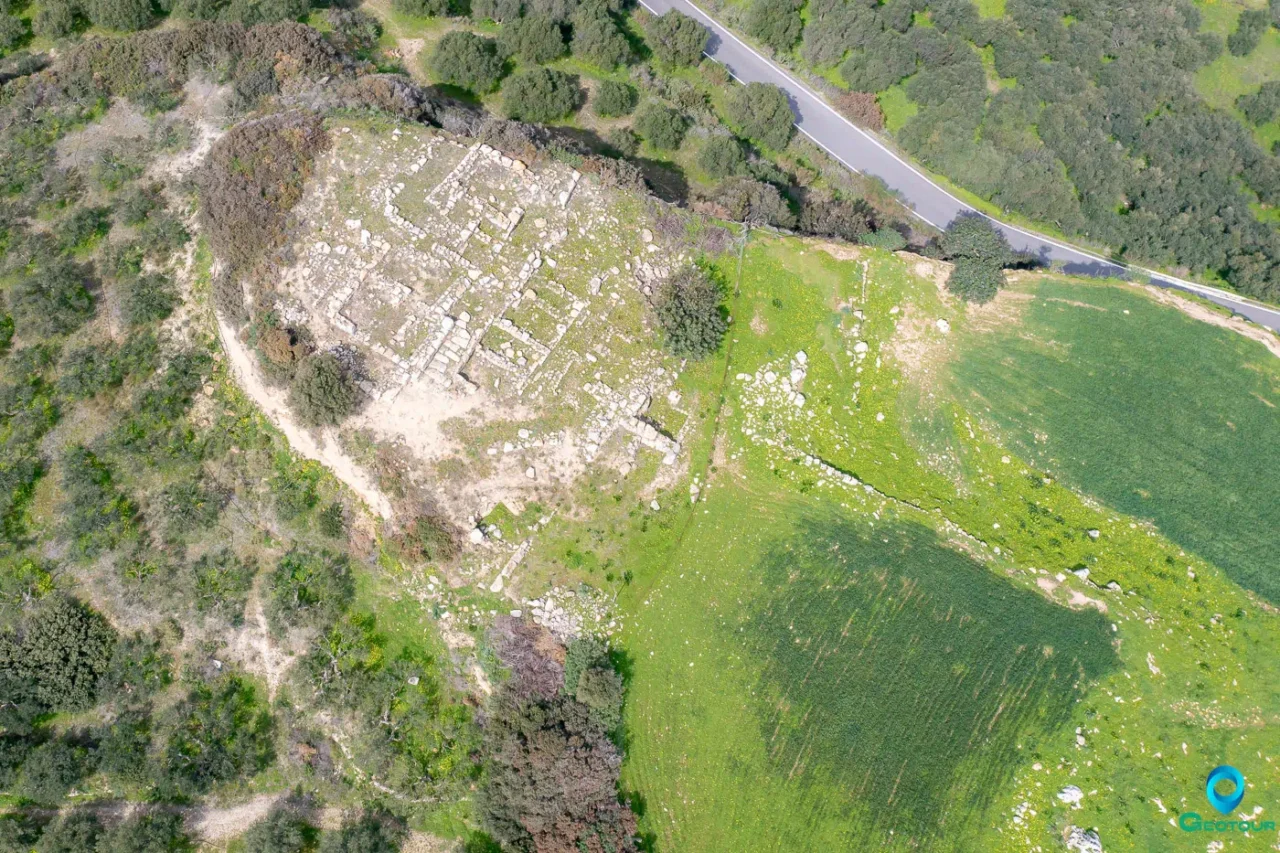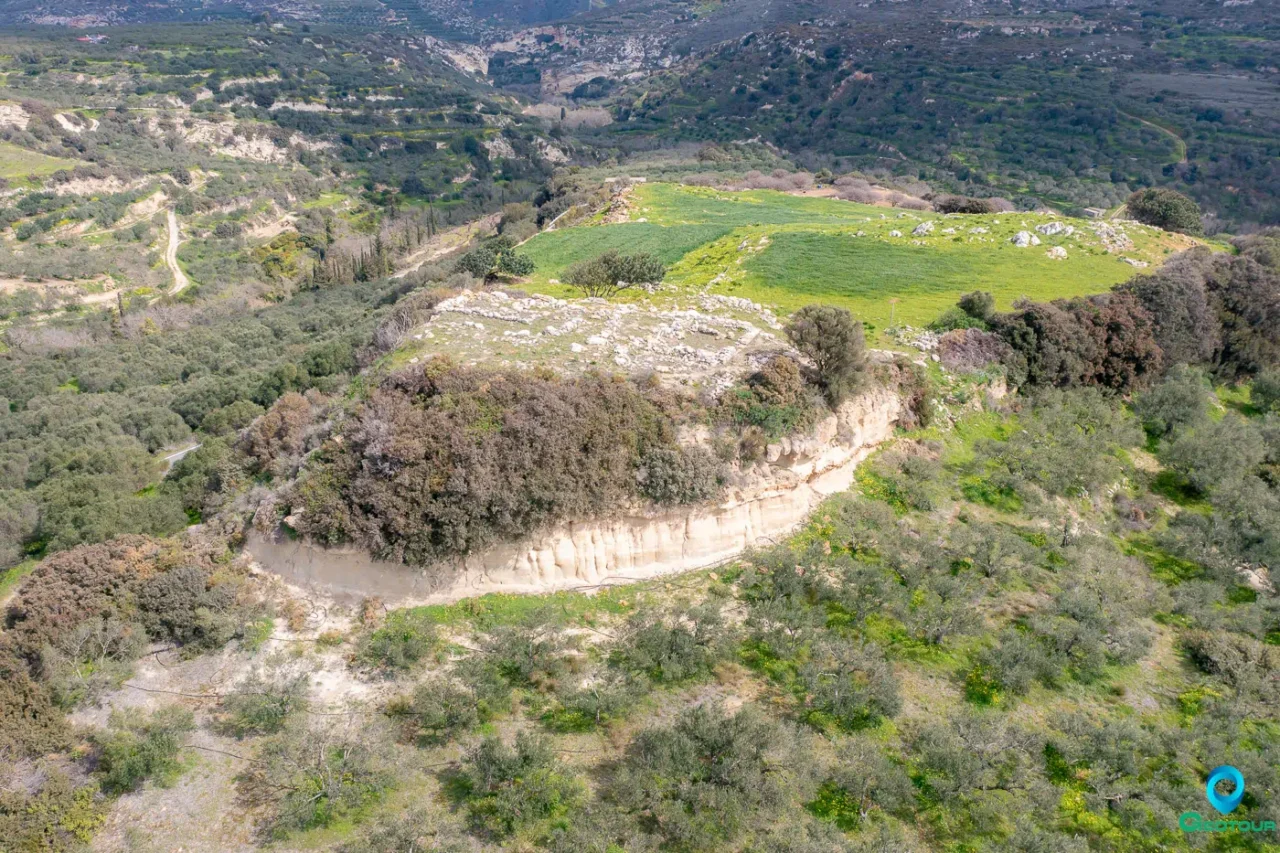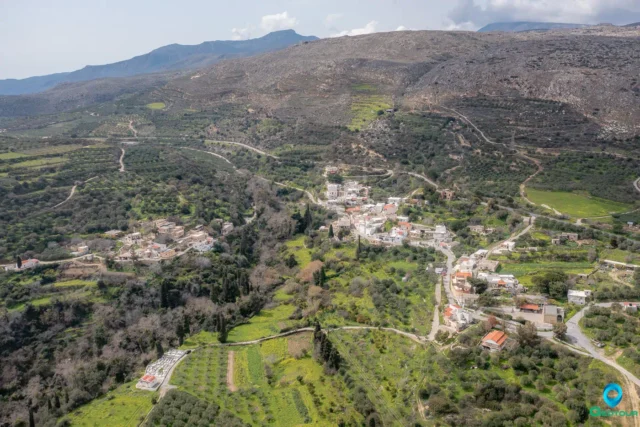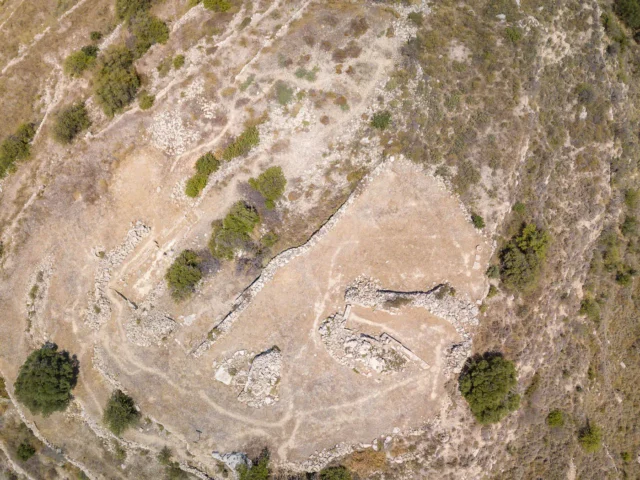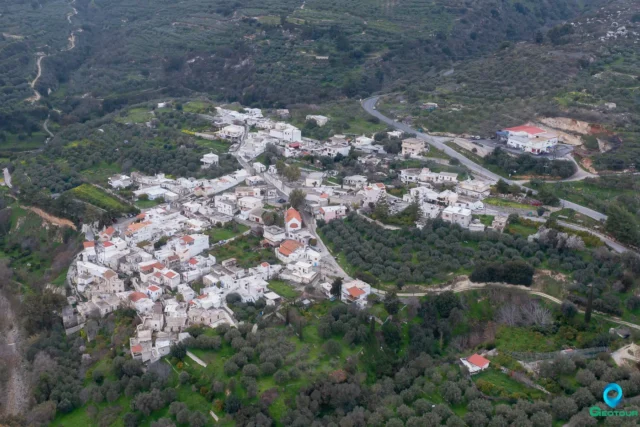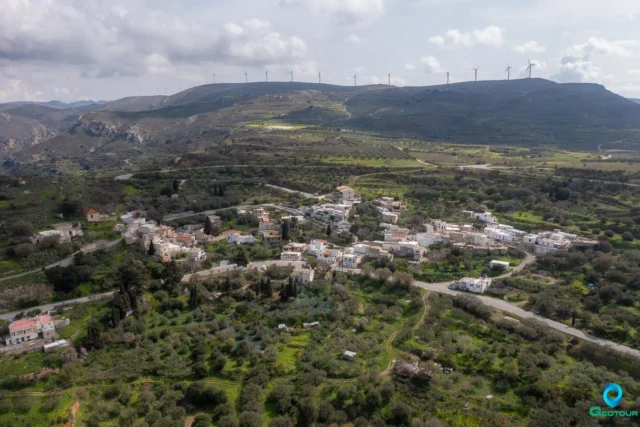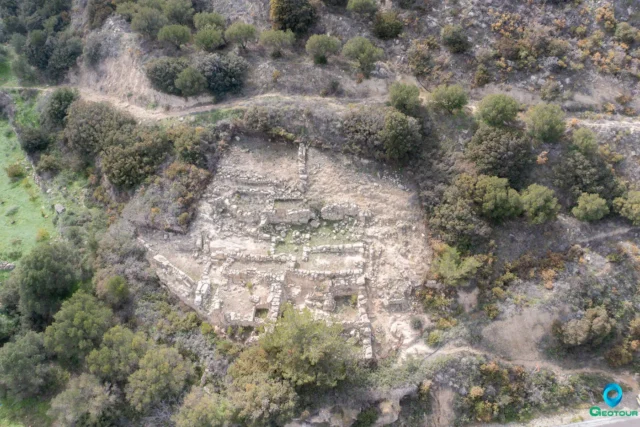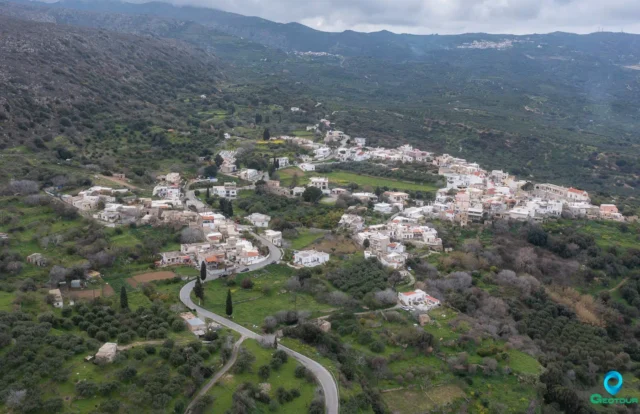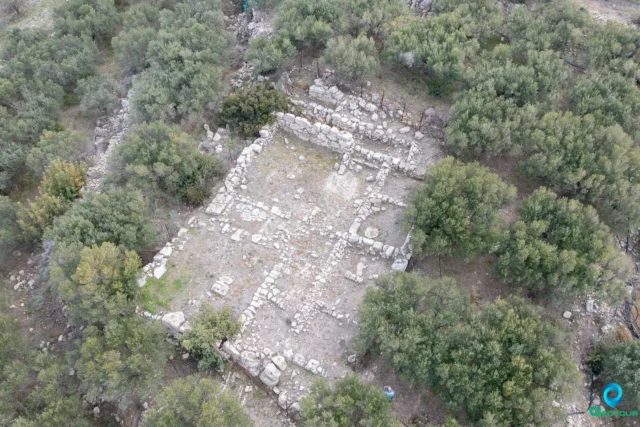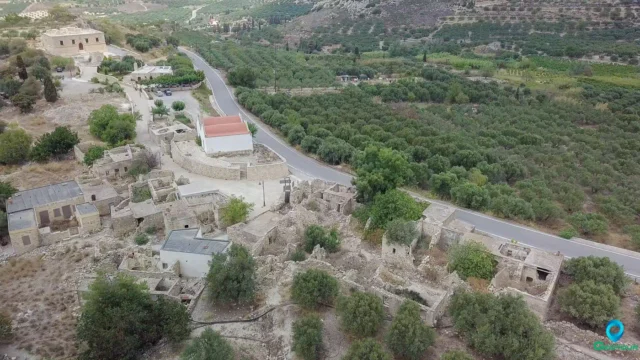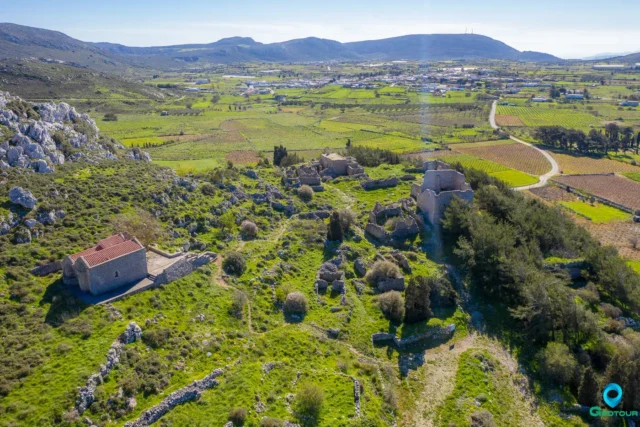The villa is located near the village known as Agios Georgios (also known as Tourtouloi the old village name), is situated on a hill called Prophitis Elias, located not far from Praisos in eastern Crete.
This Minoan villa was constructed across four terraces and covered an area of approximately 700 square meters. While the site is not in excellent condition, the upper terraces have fared better in terms of preservation compared to the lower ones. Recent discoveries suggest that the villa was not an isolated structure but likely the central feature of a small settlement, with its primary function being the exploitation of the surrounding agricultural land. In the settlement hierarchy of the Petras region, Agios Georgios/Tourtouloi is considered a second-tier ‘villa’ site, acting as a central building within a hamlet or village.
Chronological Context
- Period: The activity at Agios Georgios falls within the Bronze Age in eastern Crete, specifically during the Proto- and Neopalatial Periods. The ‘villa’ is mentioned in the context of the settlement hierarchy of the Neopalatial period (MMIII to LMIB) in eastern Crete. It was likely built during MMIII, consistent with the construction dates of other ‘villas’ in the Petras territory. The villa was seemingly active during LM I as well, given its classification within the Neopalatial framework.
Archaeological Discoveries
- Excavations: The villa at Agios Georgios was originally excavated by Nicholas Platon.
- Architectural Remains:
- The villa’s architecture is characterized by its construction on four distinct levels or terraces, adapting to the topography of the Prophitis Elias hill.
- On the second terrace, specific rooms numbered 14, 15, 16, 17, and 18 (also referred to by Greek letters M, N, Ξ, Ο, Π) have been identified.
- The lowest terrace contained a wine press, indicating facilities for agricultural processing.
- A possible kitchen area was also located on the lowest terrace.
- Due to landslips, portions of the complex situated on the north and west sides of the hill have been lost over time.
- The overall preservation of the building is described as not very good, with the upper terraces retaining more of their original structure than the lower ones.
- Notable Artifacts:
- A significant number of loom weights were discovered in the rooms on the second terrace (rooms 14-18), providing clear evidence for the presence of weaving looms on the first floor of that section. This suggests textile production was an important activity at the villa.
- The finding of a potter’s wheel at Agios Georgios indicates localized pottery production at the site. This is a notable aspect, as it suggests a degree of self-sufficiency or perhaps production for a local network.
- The presence of a wine press on the lowest terrace points to the production of wine, further highlighting the agricultural focus of the villa and its potential for processing local resources.
- Current State: The architectural remains of the Minoan villa at Agios Georgios are not very well preserved. Exposure to weather conditions over time and the impact of landslips have contributed to the deteriorated state of the structure.
Cultural and Economic Context
- Connections to Other Sites:
- The villa is situated near the settlement of Praisos in eastern Crete.
- Agios Georgios is considered one of the ‘Villa’ sites within the broader territory that may have been under the nominal control of the palatial center at Petras. This suggests a hierarchical relationship where Petras held a dominant position.
- It is grouped with other ‘villa’ sites in the Petras region, such as Zou, Achladia-Riza, and Klimataria, indicating a similar type of central building within smaller settlements.
- The relationship of the villa and its surrounding settlement to the major palatial centers of Minoan Crete is not precisely known, but its role as an agricultural and possibly craft production center likely contributed to the wider regional economy.
- Economic Activities:
- The primary economic function of the villa was likely the exploitation of the agricultural land surrounding it, as argued by Lefteris Platon. This is supported by the presence of a wine press for processing grapes.
- The discovery of numerous loom weights indicates significant textile production, likely for domestic use and possibly for trade or exchange within the local network.
- The finding of a potter’s wheel suggests that pottery was also produced at Agios Georgios, indicating a degree of craft specialization and potentially contributing to local exchange networks.
- Cultural Practices: The presence of weaving looms, evidenced by the loom weights, reflects a common cultural practice in Minoan households and settlements, where textile production was a significant domestic and economic activity. The existence of a wine press points to the cultivation of grapes and the consumption of wine, which were integral aspects of Minoan culture and economy.
Regional Significance
- Position within Settlement Hierarchy: In the three-tiered hierarchy of sites in the Petras territory, Agios Georgios occupies the second tier, below Petras itself but above isolated farmsteads. It is seen as a central entity within its local intra-settlement hierarchy, holding a position comparable, albeit on a smaller scale, to the main unit at Petras.
- Comparison to Other Villas: Like other ‘villa’ sites in the Petras region, Agios Georgios lacks certain elite architectural features that are characteristic of villas in central Crete. This mirrors the situation at the palace of Petras, which also seems to prioritize essential functional aspects over ostentatious elements. The hilltop location of Agios Georgios is a common feature shared with other ‘villa’ sites in the Petras area.
Key Points
- Location and Accessibility: Situated on the Prophitis Elias hill near Praisos in eastern Crete.
- Dimensions: Covered an area of 700 square meters and was built on four terraces.
- Active Historical Periods: Primarily the Neopalatial Period (MMIII-LMIB) of the Bronze Age.
- Historical Significance: Served as a central ‘villa’ within a small settlement focused on agriculture, textile production, and pottery manufacture, forming part of the settlement network in eastern Crete and potentially within the sphere of influence of Petras.
- Current Status: Not very well preserved, with portions lost due to landslips.

